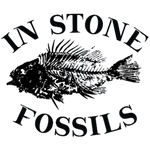
Enrolled Morocops Trilobite | Morocco
Morocops
Lower Devonian
Ofaten, Morocco
Trilobite approx. size: 25mm x 23mm x 20mm
This specimen has excellent eye facet preservation and excellent detail on the body.
Morocops is a genus of phacopid trilobite from the Devonian period, widely known from the rich fossil beds of Morocco. Collectors value Morocops for its distinctive eye structure, well-defined cephalon, and typically excellent preservation from Moroccan limestone nodules.
Key Features
• Eyes (Schizochroal):
Morocops has large, elevated compound eyes with schizochroal lenses - each lens individually set, giving a remarkably detailed visual system. The eyes often protrude noticeably from the cephalon.
• Cephalon (Head Shield):
Rounded and broad, sometimes with subtle glabellar furrows. The glabella tends to be inflated with well-defined axial segments.
• Thorax:
Made up of multiple articulated segments that allow a natural rolled (“enrolled”) preservation in many specimens.
• Pygidium (Tail):
Typically small to medium-sized relative to the cephalon, rounded, and evenly segmented.
• Surface Texture:
Fine granulation or tuberculation often appears across the cephalon and thorax, depending on species. The preservation from Moroccan nodules can be exceptional, showing extremely crisp surface detail.
• Size:
Commonly 3–6 cm (1–2.5 inches), though some species may exceed this.







